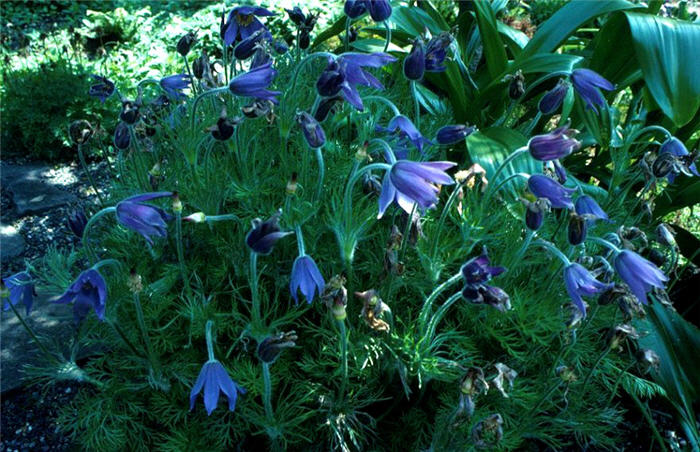| Botanical Name: Pulsatilla vulgaris | |
| Common Name: Pasque Flower |

-
Anatomy
-
Culture
-
Design
Plant Type
Perennial
Height Range
Under 1'
Flower Color
Pink, Purple
Flower Season
Spring
Leaf Color
Grey Green
Bark Color
n/a
Fruit Color
n/a
Fruit Season
n/a
Sun
Full, Half
Water
Medium
Growth Rate
Moderate
Soil Type
Clay, Loam
Soil Condition
Average, Rich, Well-drained, Dry
Soil pH
Neutral
Adverse Factors
n/a
Design Styles
English Cottage, Meadow, Ranch, Woodland
Accenting Features
Showy Flowers
Seasonal Interest
Spring
Location Uses
Perennial Border, Parking Strip, Patio, Walkways
Special Uses
Small Spaces
Attracts Wildlife
n/a
Information by: Stephanie Duer
Photographer:
Photographer:
-
Description
-
Notes
This is one of the most charming spring bloomers! From mid to late spring, downward-facing, mauve-pink bells with bright yellow stamens bloom before foliage emerges. As the flowering season nears an end, leaves emerge, a soft green to grey-green, deeply serrate, and slightly fuzzy. Unlike some spring bloomers, the foliage is attractive all summer. Flowers are followed by puffs of feathery seed heads which are quite showy. Use in perennial borders, parkstrips, along walk ways. Generally grows about 6 to 10 inches tall and wide.
Grow in well drained, sandy-loam to clay-loam soils in full sun to part shade. To enjoy the little seed heads, don't remove spent flowers.